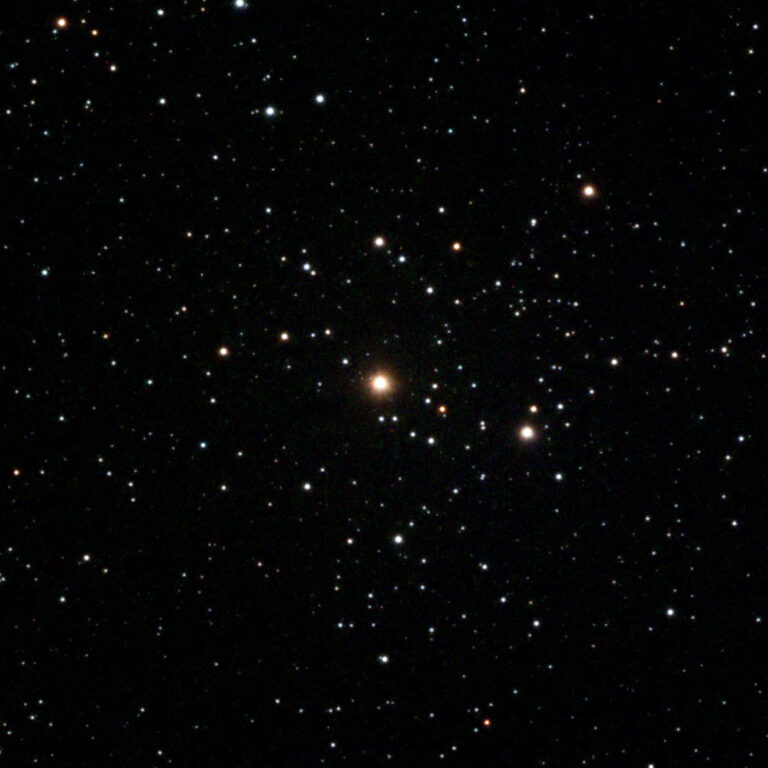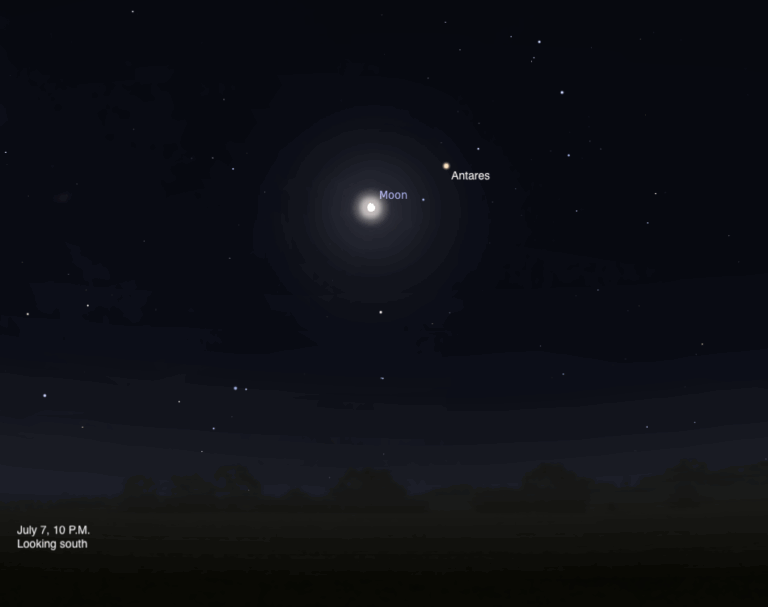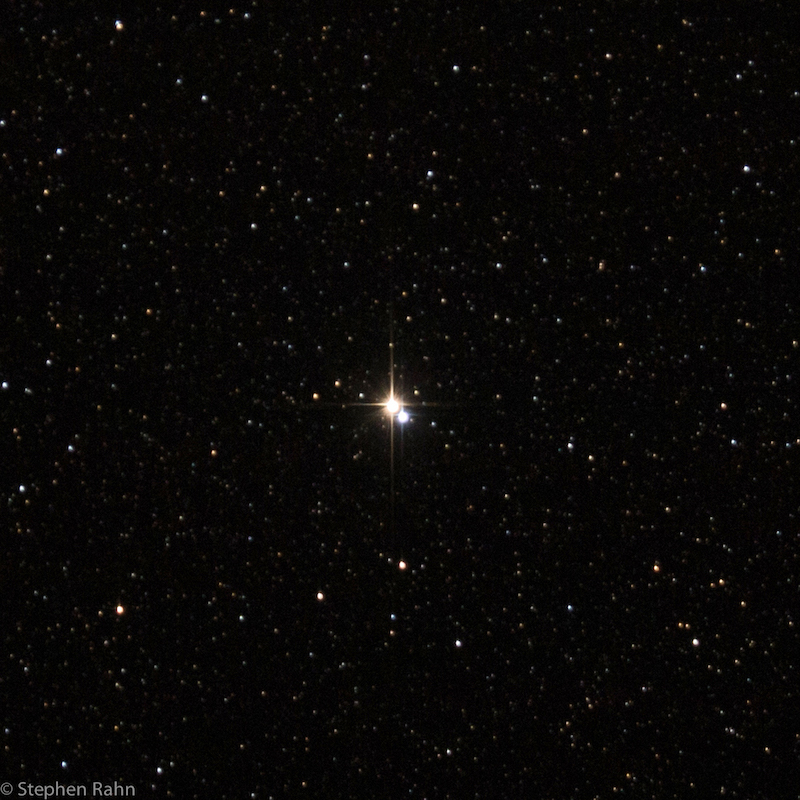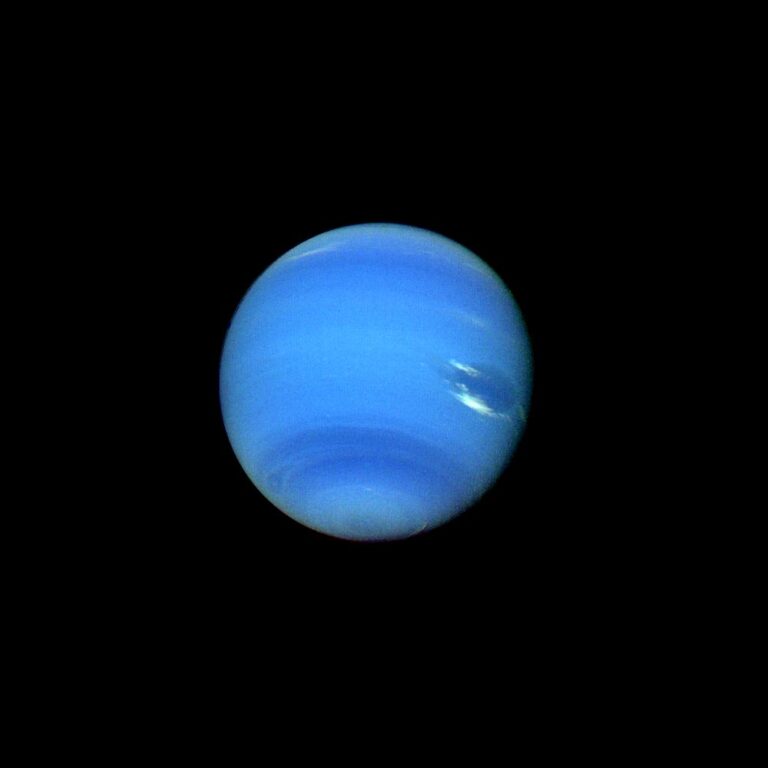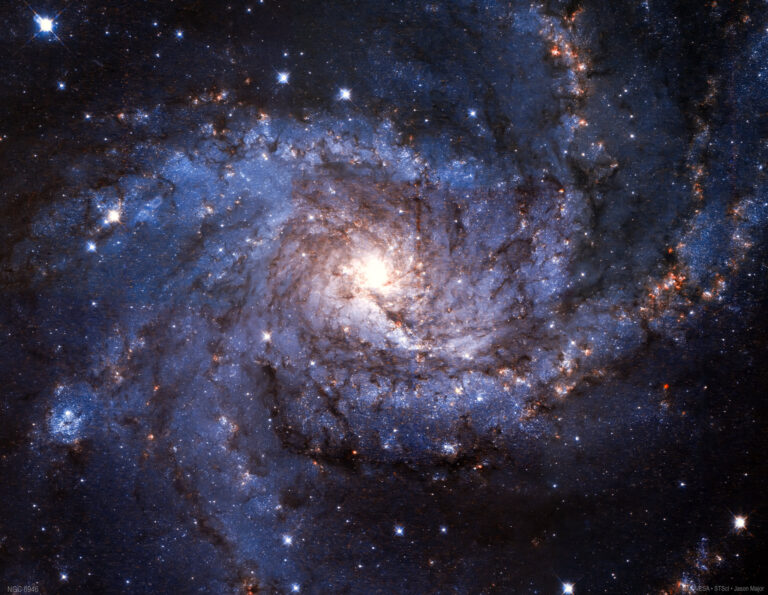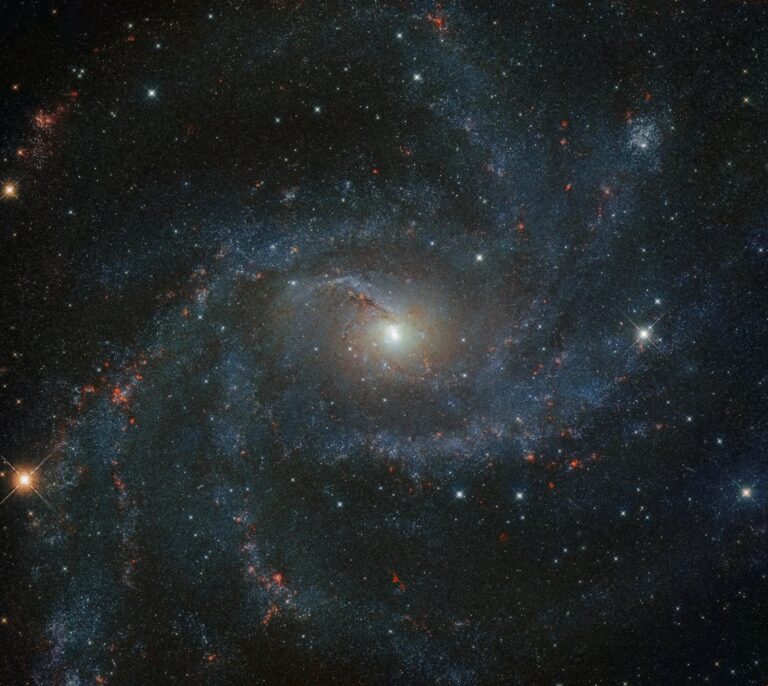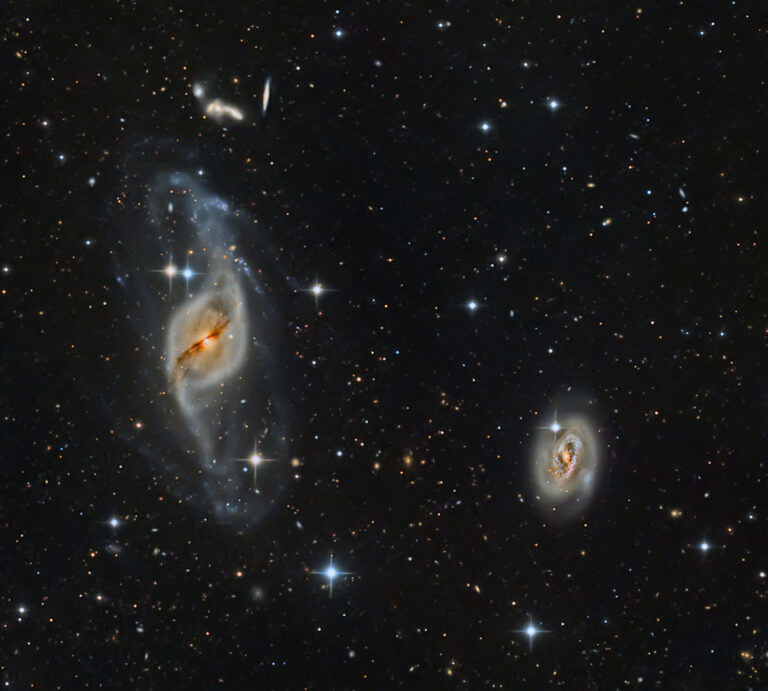Key Takeaways:
Saturday, October 16
Venus passes 1.5° north of the red giant Antares in Scorpius this morning at 10 A.M. EDT. Like Jupiter and the Moon yesterday, however, the two aren’t visible at that time, so instead step outside after sunset to spot them, roughly the same distance apart and hanging low in the southwest, about 12° above the horizon 15 minutes or so after sunset. Venus is a bright magnitude –4.4, far outshining the 1st-magnitude star.
Tonight is also International Observe the Moon Night. Our satellite, which is a waxing gibbous whose face is between 50 percent and 100 percent lit, rises around 5 P.M. local time and is visible all evening in eastern Aquarius. NASA is hosting several activities in honor of the event, including a NASA TV broadcast you can tune in to from 7:30 P.M. to 8:30 P.M. EDT tonight.
Observing the Moon can be as simple as casting your gaze upward, or as complex as training a telescope on its rugged surface to make out fine details. Tonight, because our Moon is mostly illuminated, many of its features are on display, with only its western limb (east in our sky) still hidden in shadow. Look for features such as the Seas of Serenity, Tranquillity, and Showers; as well as large craters such as Tycho, Langrenus, and Copernicus.
Sunrise: 7:12 A.M.
Sunset: 6:18 P.M.
Moonrise: 4:57 P.M.
Moonset: 2:54 A.M.
Moon Phase: Waxing gibbous (85%)
Sunday, October 17
The Moon passes 4° south of Neptune at 10 A.M. EDT. By this evening, they’re 5.8° apart at sunset and rising higher as darkness falls. Once twilight is gone, try finding the solar system’s most distant planet with binoculars or a telescope. Its magnitude 7.7 glow sits 3.5° east-northeast of Phi (ϕ) Aquarii, which itself shines at magnitude 4.2.
Mercury is stationary at 9 P.M. EDT, but isn’t visible in the evening due to its position relative to the Sun. Instead, you’ll want to catch it in the morning, when it’s 7° high 30 minutes before sunrise. The small planet is magnitude 1.1 and just over 2° south-southwest of the star Porrima in Virgo. Its disk appears 9″ wide in binoculars or a telescope and is a small crescent just 19 percent lit.
Mercury was previously moving northwest (retrograde) at a steady clip; now, it will swing around and begin moving southeast (prograde).
Sunrise: 7:13 A.M.
Sunset: 6:17 P.M.
Moonrise: 5:22 P.M.
Moonset: 4:00 A.M.
Moon Phase: Waxing gibbous (92%)
Monday, October 18
Next, it’s Jupiter turn to stand stationary against the background stars. It comes to a halt in Capricornus at 7 A.M. EDT. The gas giant, which had been moving southwest, will now swing around and begin sliding northeast, pulling away from Deneb Algedi.
Because the planet sets two hours after midnight, the best time to catch it is this evening after dark. And tonight, Ganymede is just about to slip onto Jupiter’s large disk at sunset in the Eastern time zone. The moon then takes just over 3½ hours to cross the planet’s face, moving from east to west.
If you stick around longer, Ganymede’s shadow slips onto the disk just after 11 P.M. EDT, followed by the small moon Io around 1 A.M. EDT on the 19th. Io’s shadow eventually follows, too, and observers with clear skies at 2:20 A.M. EDT on Tuesday morning (11:20 P.M. PDT on Monday night) will glimpse a three-for-one: Ganymede’s shadow about to slide off Jupiter’s western limb, with bright Io slightly more than midway across the disk and its own smaller shadow near the eastern limb.
Sunrise: 7:14 A.M.
Sunset: 6:15 P.M.
Moonrise: 5:46 P.M.
Moonset: 5:04 A.M.
Moon Phase: Waxing gibbous (96%)
Tuesday, October 19
Hidden within Hercules the Strongman is a spectacular ball of ancient stars often called the Hercules Globular Cluster. Cataloged as M13 in Messier’s not-a-comet list, this ancient cluster was discovered by Edmond Halley (for whom the famous comet is named) in 1714.
You’ll find M13 2.5° south of Eta (η) Herculis, which shines at magnitude 3.5. The cluster itself glows at magnitude 5.8 and spans about 20′ — nearly the size of the Full Moon. Because the Moon is also up in the sky tonight, you’ll likely need binoculars or a small scope to tease out this cosmic fuzzball from the background. But note its position and come back when there is no Moon out, and you may see it without any optical aid at all. M13 contains more than 100,000 stars and is so dense that in some cases, stars within the cluster collide, creating younger-looking stars called blue stragglers.
Sunrise: 7:15 A.M.
Sunset: 6:14 P.M.
Moonrise: 6:08 P.M.
Moonset: 6:06 A.M.
Moon Phase: Waxing gibbous (99%)

